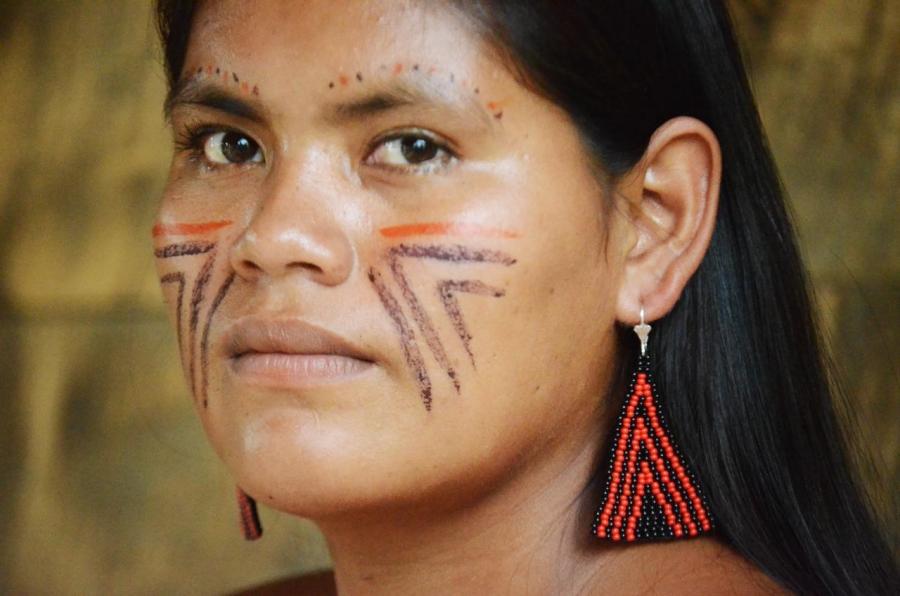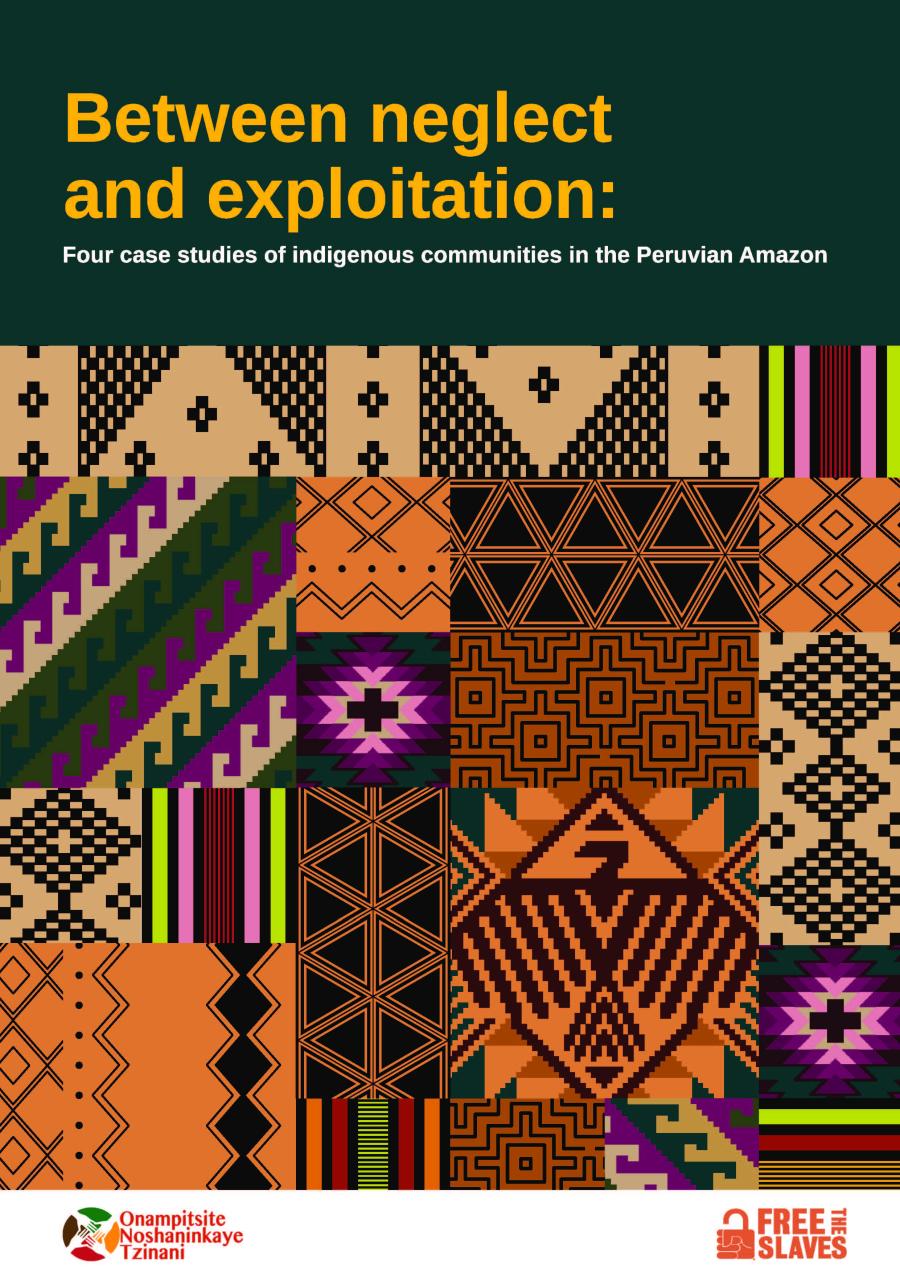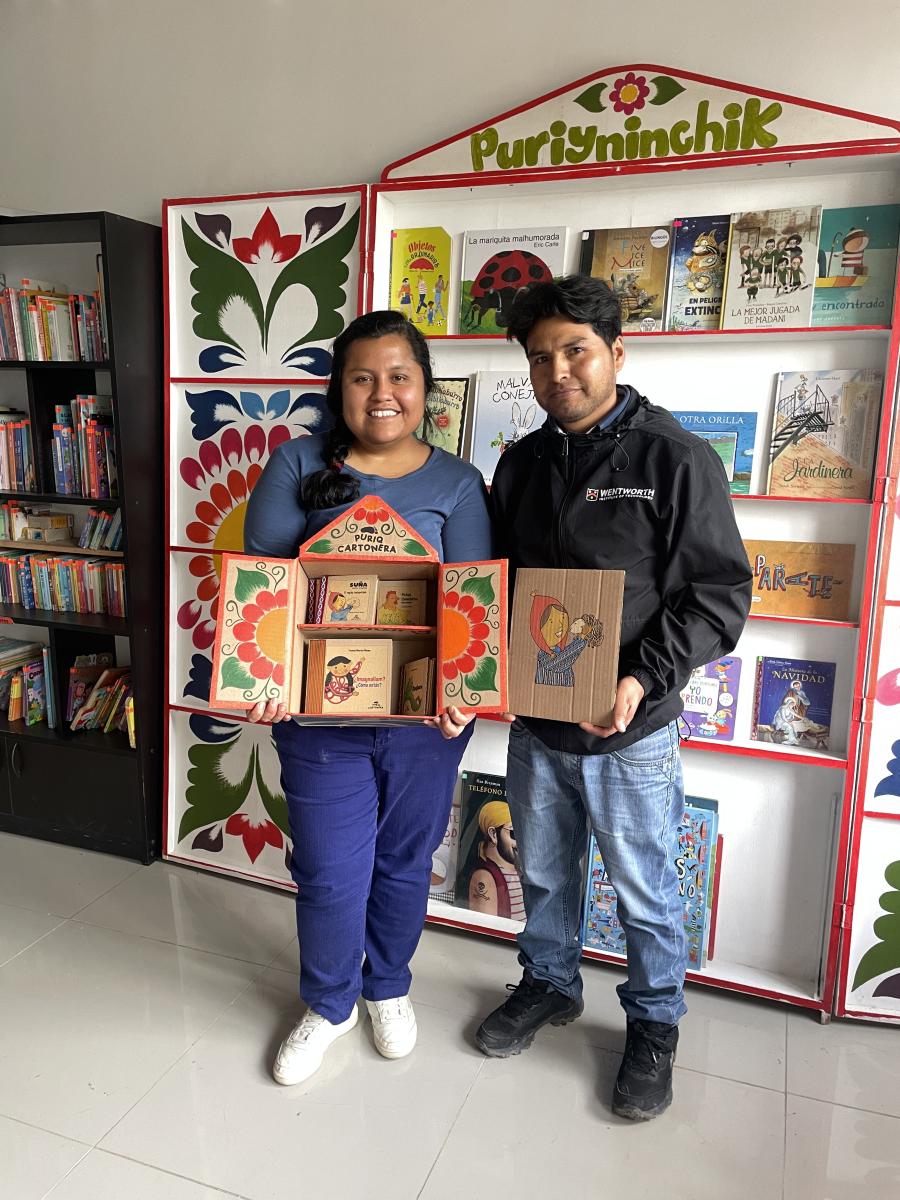Located in the Peruvian Amazon, Cooperative Forestal Yanesha (the Yanesha Forestry Cooperative - COFYAL) represents an encouraging new idea for indigenous communities struggling to control their traditional culture and land and to participate in wider economies. Founded in 1986, COFYAL has become the first indigenous co-op in Amazonia to export forest products to Europe and the United States. Co-op members gather the products in a sustainable manner from natural forests, employing a harvest cycle that closely mimics the slash-and-burn forest-gardening techniques Yanesha have employed for millennia.
COFYAL emerged from a long, concentrated fight by the Yanesha to control their land and future. Threatened by a massive government-sponsored road-building and colonization project into the Pichis and Palcazu valleys, the Federation of Yanesha Native Communities (FECONAYA) struggled to participate in the planning process and assert official recognition of existing Yanesha communities. Though marginalized during the project's early years, the Yanesha eventually gained land titles, a measure of social and health services, and, in the end, a forestry enterprise.
The planning process that eventually led to the co-op began with a series of community workshops in 1984, two years before COFYAL's formal inception. These meetings were faciliated by Proyecto Especial Pichis-Palcazu (the Pichis-Palcazu Special Project - PEPP), which had administrated the road-building/colonization project for the Peruvian government, and the tropical Science Center, an applied tropical research center based in Costa Rica. At the workshops, foresters and other specialists from PEPP and TSC worked with the Yanesha to analyze and project land-use and population trends for the following decade. The discussions identified potential land-use problems, evaluated their impacts, and explored a variety of ideas for sustainable development. In the end, because Yanesha communities still controlled a large forest base, the workshops selected a wood-manufacturing project based upon sustained-yield forest management as the most viable direction. Subsequent workshops debated such issues as the structure for the enterprise, its size and marketing needs, and the time frame for implementing the effort.
The many lessons learned in this planning phase and the co-op's achievements make COFYAL a model for indigenous communities searching for community-based development alternatives. It was this local process that has permitted the Yanesha to develop and control their own autonomous enterprise.
THE DOOR CLOSES, A WINDOW OPENS
In 1980, then-president Fernando Belaunde Terry created the Special Projects Program to colonize Peru's jungles and ostensibly promote development there, PEPP was one arm of this ambitious plan. To help fund roads and other elements of the project, the U.S. Agency for International Development (AID) granted Peru $28 million. While AID grants and loans stipulated that the project must be coordinated with local native communities - principally Yanesha in the Palcazu - PEPP initially failed to even consult with, much less answer to, the people who, in effect, own and guard that part of Amazonia. However, the project's disjoined implementation and low morale, plus corruption within PEPP and a change in its leadership, created an opening for a few dedicated professionals in PEPP. They reoriented the effort to target the valley's residents as its main beneficiaries.
This new direction was aided significantly by constant pressure from AID's Peru office on PEPP to directly benefit native communities. For example, AID's Office of Rural Development pushed Peru to formally recognize Yanesha communities and grant them legal land titles. AID also encouraged PEPP to finish several long-promised projects that had never been carried out. Among these unfilled projects were the establishment of communally owned general stores and the training and fielding of a cadre of native extension workers to ensure that benefits reached each community.
By 1984, the Tropical Science Center, which had contracted with AID to assist PEPP's forestry work, had introduced the concept of sustainable resource management into the Pichis-Palacazu project. Given the region's fragile environment, this forced PEPP to center its thinking around TSC's plan for sustained - yield management of the valley's natural forests.
Ultimately, through community-level discussions, workshops on land-use planning, and trust-building activities between PEPP personnel and native communities, Yanesha leaders took interest in TSC's plan and began talking directly with PEPP. What emerged was a technical package for a forestry enterprise that included not only a portable sawmill but also the machinery, training, and salaries to operate it. Most important, the co-op was always guided by the perspective of managing forests in a way that serves present needs while conserving them for the future.
CREATING THE YANESHA FORESTRY COOPERATIVE
The 33 Yanesha communities dispersed in Peru's Central Selva region, which includes the project area, are all part of FECONAYA. An autonomous indigenous organization established in the late 1960s, FECONAYA proposed that community members should participate directly in developing and controlling the management of any business to be developed in the Palcazu Valley.
In early 1986, five of the valley's eleven Yanesha communities elected representatives to help organize the forestry enterprise. These communities had priority in the project because they were the first to be affected by a new highway Peru was building to the valley. A non-Yanesha Indian on the committee, Manuel L zaro (an author of this article), was chosen as administrator. He came from the Ashaninka community of Yarina in the neighboring Pichis Valley and later became COFYAL's general manager.
The organizing committee, formed on March 2, 1986, focused first on finding a form for the forestry business. As its first official act, the committee signed a two-year agreement with PEPP for training, technical assistance, and logistical support. Then, with PEPP's help, the committee proposed a co-op as the most appropriate structure because this structure resembles the Yanesha's traditional way to decide communal issues. The committee also began organizing communal assemblies to provide a constant line of communication between itself and each community.
On May 18, 1986, the Yanesha Forestry Cooperative was formally constituted, and the co-op's general membership quickly elected committee members and managing councils. The members also elected chiefs for each technical area of production. A plant chief runs the sawmill, preservation plant, carpentry workshop, and charcoal production. A forestry chief is responsible for field work, such as forest inventories, elaborating the forest-management plan, harvesting activities, and maintaining logging roads. The general manager handles administrative and commercial operations. In these diverse endeavors, PEPP, TSC, and anthropologists Anthony Stocks and Thomas Moore provided technical assistance. When PEPP support ended in 1988, the co-op obtained financial and technical help from the World Wildlife Fund's Tropical Forestry Program, which was channeled through the Peruvian Foundation for the Conservation of Nature.
The Yanesha consider COFYAL a dual-purpose organization. On the one hand, it protects natural resources on communal territories from indiscriminate use. On the other, it impedes the exploitation of the forest by non-indigenous wood companies. A parallel goal is to avoid the increase of pastures for cattle raising and unplanned agricultural clearings.
That said, COFYAL's constitution states three principle objectives for the enterprise: * to create a source of employment for its members; * to direct forest management, harvesting, and the integrated use of Yanesha communal forests to promote the industrialization and commercialization of potential wood products; * to support the development of native communities, respecting their separate identities.
The existence of COFYAL has helped the Yanesha determine appropriate land uses for what, with the official delineation of community boundaries, is a finite resource base. In addition, it has demonstrated to professional foresters in Peru a number of innovations, including the natural regeneration of harvested forest areas without costly forestry nurseries, and the viability of draft animals in harvesting forest products on a small scale.
A PLAN FOR FOREST MANAGEMENT
One of the most ecologically fragile and species-diverse regions of the world, the Palcazu Valley sits in the rugged foothills of the Andes. With heavy rainfall and no significant dry season, the valley contains over 1,500 species of trees alone.
In this complex environment, the Yanesha have long combined agricultural and cattle activities with hunting, fishing, and the gathering of forest products. Consequently, their knowledge of the forest and traditional technology is extensive. COFYAL foresters only had to improve and in some cases combine Western science with Yanesha knowledge, and apply these techniques in the field. This was the case with the co-op's adaptation of the "strip shelterwood system" of harvesting trees in long, narrow strips and leaving natural forest in adjacent areas to naturally regenerate the strips. After many years of observing natural disturbances and forest dynamics. TSC ecologists Gary Hartshorn and Joseph Tosi had developed this system, which in fact closely mimics the Yanesha's traditional cut-and-fallow gardening system.
Yanesha familiarity with the nuances of the environment was never more obvious than when it was time to apply the theory of this strip system to Palcazu forests. Yanesha foresters took the lead in brainstorming a sophisticated procedure to distinguish "operable" areas in the forest from fragile areas to protect. They considered topography, soil drainage, access routes, and other factors to identify islands of forest for harvesting. These areas constituted less than half the total production forest, ensuring ample reserves of natural forest for regeneration. During this process, Yanesha forestry technicians learned and applied technical skills such as forest inventory, data collection, and surveying (see diagram at left).
In other words, the silvicultural techniques now being developed and applied in the Yanesha forests are a unique combination of scientific research and technology, provided by the TSC technical-assistance team, and sophisticated traditional knowledge, provided by Yanesha foresters. In a very real sense, COFYAL exemplifies an alternative in which Western technology provides the "harware" and indigenous knowledge the "software", with each party an equal contributor to appropriate development.
A QUESTION OF SCALE
COFYAL's progress derives entirely from the constant incorporation of communities into its work, allowing the Yanesha to fully control the co-op's administration and direction. All co-op members have had to learn to work effectively with with assistance agencies and to share their experience with technical advisors. A key element for this collaboration has been the willingness of each party to respect the experiences the other brings. In addition to silvicultural techniques, the Yanesha foresters acquired a number of other highly technical skills in short order. For example, they became proficient topographers, learned to interpret aerial photos of the forest, and mastered motor mechanics, the principles of cooperatives, and much more.
Essential to this learning process were weekly planning and evaluation meetings. These sessions, in which all co-op members participated and which sometimes ran for hours on end, proved crucial to overcoming the challenges that emerged during the all-important organizational phase.
On the other hand, several problems resulted from the co-op's failure in the planning process to consider social implications when determining the scale of the enterprise. As a result, COFYAL members had to reorganize the time they devoted to the co-op versus time performing their duties in their own communities or for their families. The competing demands on members' time led to a variety of social and economic problems in and between families.
One manifestation of the resulting adjustments is that women have taken on more of the effort to keep the family supplied with food. In many cases, women have stepped beyond traditional roles to engage in activities formerly the preserve of men. Women now hunt, fish, and even clear and burn forest land to establish a subsistence garden.
Some working members have addressed the time issue by hiring people to work their subsistence gardens while they continue at COFYAL. Recently, the co-op has improved work plans and time-sharing of co-op duties, and has better distributed vacations and leaves. In some cases, the co-op has advanced salaries or loaned money to key workers to help remedy family problems.
Today, due to the cumulative effect of the Shining Path guerrilla war - along with the war's catastrophic effects on Peru's economy - key national markets for preserved pole products have failed to develop. The major obstacles COFYAL faces still stem from the inadequate conceptualization process early in its development. Simply put, the planners failed to fully realize and analyze the consequences for the Yanesha of the scale chosen for the forestry project. The enterprise that evolved, though significantly smaller than an elephantine plan originally proposed by AID and TSC, has proven to be far larger than the participating Yanesha communities can sustain without huge personal sacrifice and significant social consequences for an already fully employed workforce.
FOR FURTHER READING:
Richard Chase Smith, Las Comunidades Nativas yel Mito del Gran Vacio Amazonico: Un Analisis de Plantification para el Desarrollo en el Proyecto Especial Pichis Palcazu, AIDESEP/Cultural Survival, 1983.
"Resource Management and Tribal Development; Issues from Peru's Palcazu Project," Tebiwa, Vol. 24 (Journal of the Idaho Museum of Natural History).
PASSING ON THE YANESHA LESSON
Wood processing is an inherently heavy industry, demanding capital, a skilled workforce, and a fairly high level of infrastructure, such as roads and supporting industries. Fortunately, there is a range of scales for viable wood industries, from transporting timber with draft animals to processing logs with computer-controlled band saws. Generally, scale can be determined by choosing the right markets - local, national, international - and by examining the potential community impact of entering a given market.
The Yanesha experience leads to a number of questions for planners to consider in developing community-based forest management efforts. These are intended to help determine an appropriate project scale: * What is the available workforce? Can it sustain the chosen scale? * How much time does the venture require each community member to commit? What does this commitment imply for the member's other family and community responsibilities? * What is the available production forest resource and how much is required for this scale of production? What are the implications for competing land uses? * What infrastructure is required to transport and market products at this scale? * What products could be processed? Which offer the greatest value-added opportunities? * What effect does scale have on the economic viability and ecological sustainability of the project? * What investments, financial assistance, and technical assistance will a project of this scale require? * Can the community manage and administer a wood industry of this scale? * What skills need to be developed? * What is an appropriate time line for implementing the project?
Article copyright Cultural Survival, Inc.



